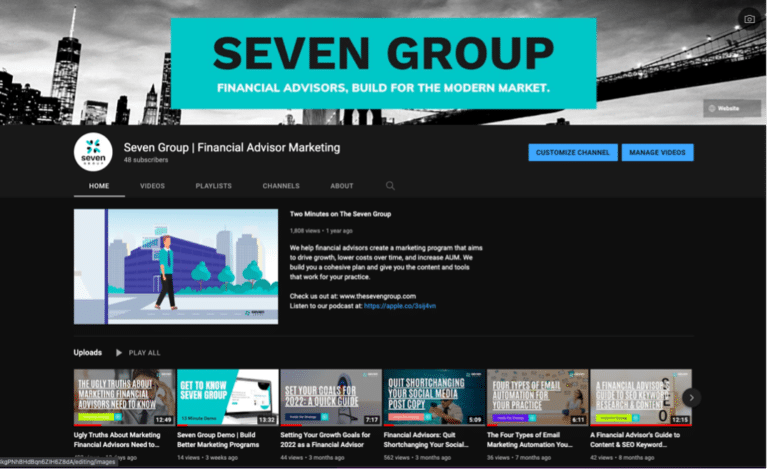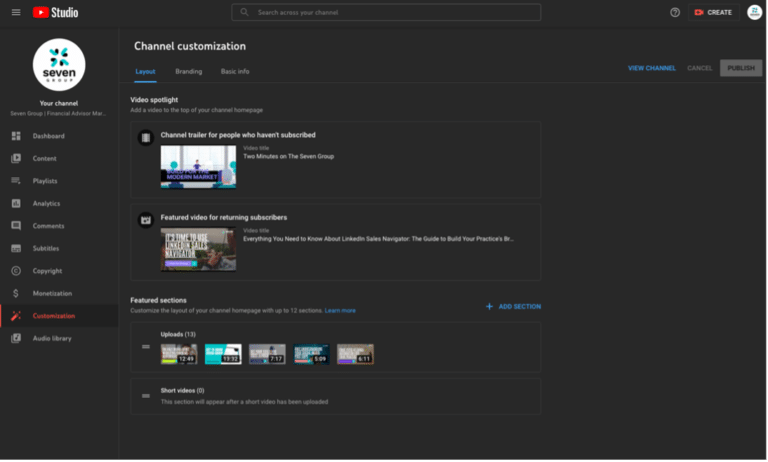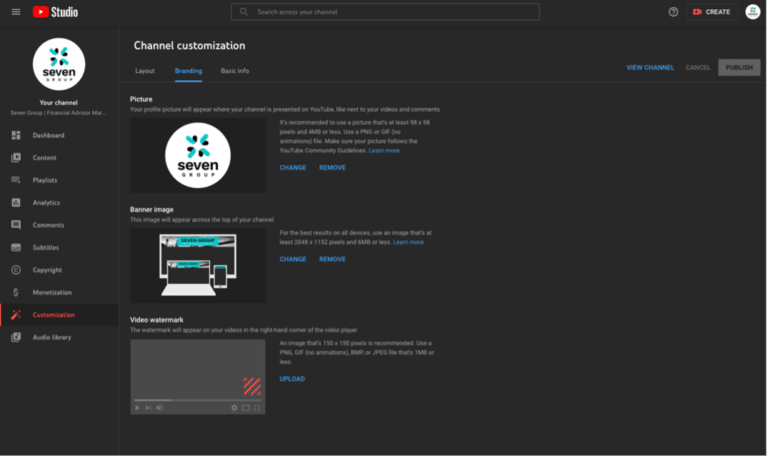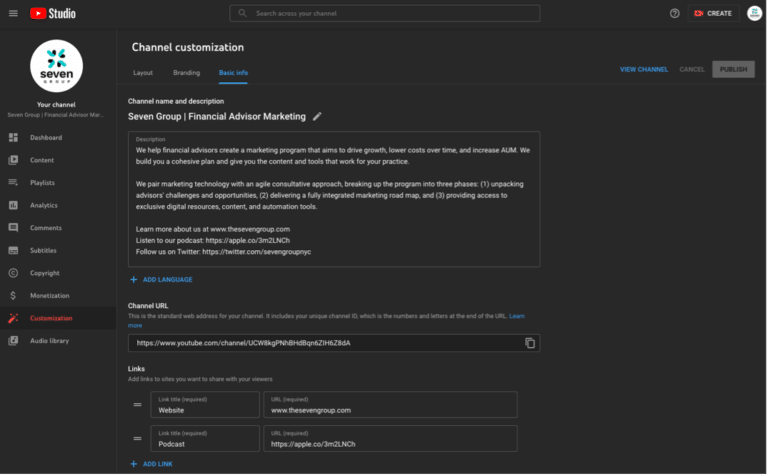YouTube is the 800-pound gorilla and then some when it comes to video platforms. And for housing video and optimizing search, it's increasingly becoming more important for a financial advisor to have a channel.
Why is video so important? Our attention spans are getting shorter, and we want less friction to information – and video helps with that. In fact, 92% of internet users watch video content each week.
And a lot of that viewership is coming from YouTube.
Some stats that you may not be aware of:
- YouTube has 1.7 billion unique monthly visitors1
- YouTube is the world’s second-most visited website1
- 62% of U.S. of YouTube users say they visit the site daily1
So, how do you tactically set up and optimize a YouTube account? Let’s get into it.
Step 1: Create a YouTube Account
First, assuming you have a Gmail account, you're automatically set up with a personal YouTube account, which is great but to create a business YouTube, set up a brand channel.
- Go to your YouTube account page
- Click Create a Channel
- Enter a name for your Brand Account
You’re ready to get rocking.
Step 2: Set Your Foundation for Your Channel
Once your page is created, you’re ready to set up your descriptions and information. Just like optimizing any other channel, this is incredibly important and there’s three sections to optimize.

First things first, determine your layout. If you haven't already, you should record a "Welcome to My Channel" video breaking down:
- Who You Are
- Who You Work With
- Why You Started the Channel
- What You'll be Sharing
This is your channel trailer and should be the first video you upload to YouTube.
Once that is complete, you can add featured videos and other sections, including your most popular videos, specific playlists under a series, or something else. For example, if you did a retirement series, you may want to bucket all these videos together under one section. This will allow you to organize your content more effectively and let your audience find specific topics or videos more effectively.

Add your logo and banner. Unsure about where to create a banner? Head to Canva, search for YouTube banners and customize from there. It's never been easier to create graphics for your page.

Finally, head to the basic info tab and add:
- Description: It's essential to make this as descriptive as possible. Describe what you do and who you serve and include descriptive keywords to help with searches.
- Links: Add all proper links to your website and any other channels (i.e., Facebook, Calendar Booking, etc.) that will enable potential opportunities.

Getting started is hard for most advisors. Video production looks overwhelming at first – but it’s really not. To ease into it, we have advisors lead with a primer.
As mentioned above, primer videos are you talking about you.
A few video ideas:
- Why you started your channel
- Why you started your firm
- Who do you work with, and why
- What your practice does to serve the people you work with every day
- How you operate with your planning model
The key here is to get started and get going. You want to ensure you have an editing template in place – we work with every Advisor I/O member to create their animations and edit their initial episodes.
We get into more of that here: The Financial Advisor's Guide to Filming, Producing, and Editing Video Content.
Step 3: Get to Publishing AND Distributing
Set a cadence – when are you going to drop new videos? How are you going to distribute them? Get it down on paper how you want to promote your video. Build a content backlog for the next 12 months – if you’re publishing a video every two weeks, that’s 24 videos.
Remember the philosophy: Publish once, distribute as much as possible.
When publishing a new video, here are a few things to keep in mind:
1. Set Your Keywords Carefully
Ranking well in Google is getting harder by the day, but you have opportunity. Get your keyword research in order, leveraging tools like SEMRush and Ahrefs. Remember, longtail wins the day (read more here).
2. Use Keywords in Your Video Title & Description
Your video titles help users, and Google navigate. First, set the intent for your videos. Most people looking for financial information via search are looking for How To Do X or Why Should You Do Y. Matching what your video is about with the search terms is key. Use your focus key phrases in the title of your video.
You should also be using your keywords in your video description. The key phrases or words should be in the first 1-2 sentences. Make your description tactical and it should be around 200-250 words.
Aim to also include links to your site and other social channels in your description. This will allow easy access for people to find your digital properties from YouTube.
3. Use Hashtags Strategically
Regarding YouTube, hashtags matter, but only the first three. Add three hashtags with the focus key phrases at the end of your description.
For example, if you're doing a video on Mega Backdoor Roth's, include the hashtag as one of the three at the end of the description. YouTube pulls these into the top of the video and helps create relevancy around them for search.
4. Make Sure Your Thumbnail is Engaging and Clear
So many people skip out on the YouTube thumbnail when the reality is – it's almost more important than the video itself. Why? That's what the user sees initially. That's what draws them in. Use clear, bold, big font on the thumbnail itself; ensure your imagery is clear and engaging.
Like advertising creative, you want to cause a "thumb-stopping" reaction, and the only way to do that is to put the time and energy into your creative graphics.
Don't know where to start? Canva. Search YouTube, and you will see several templates you can manipulate and pop into the results.
The Bottom Line
YouTube can be an excellent marketing channel for advisors. It’s important to keep in mind that it’s a long game no matter how you cut it, and YouTube is no different. Set your vision, film your videos, and ship video every week. You’ll be rocking in no time.

